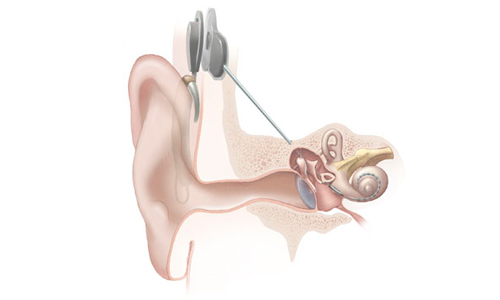Difference between BAHA and cochlear implant
Introduction
The sense of hearing in humans is the result of a sound wave that travels from the external ear to the inner ear through the middle ear. The sound wave vibrates the bones of the skull gently which sends impulses to the inner ear and the auditory nerve there then sends electrical signals to the brain that are interpreted to make sense.
BAHA stands for “Bone Anchored Hearing Aid” and is the most commonly used hearing aid. It relies on the principle of bone conduction i.e. conduction by vibrating skull bones. BAHA sends signals to the inner ear and the auditory nerve and entirely bypasses the external and the middle ear pathways.
A Cochlear implant functions slightly differently. There are minute canals called cochlea in the inner ear. These cochlea help conduct the sound to the auditory nerve. The cochlear implant sends signals to this auditory nerve directly such that it bypasses even the inner ear. The chief difference is that BAHA works on the integrity and the normal functioning of the inner ear whereas cochlear implants work totally on the integrity of the surgically installed implants in the cochlea and a functioning auditory nerve.
Difference in functioning
The BAHA system makes use of a titanium implant which is placed inside the skull with a small extension outside the skull, behind the ear. The sound processor is connected to the implant present in the bone directly and transmits sound by sending vibrations to the skull and inner ear, ultimately reaching the auditory nerve.
The cochlear implant has a transmitter, a receiver, a microphone and a processor. Externally, there is presence of a microphone, speech processor and a transmitter which converts ambient sounds into the signals and stimulates the auditory nerve directly. It bypasses the damaged parts of the inner ear (cochlea). There are electrodes that wound through the inner ear (cochlea) and send electrical signals to the nerve. A cochlear implant requires surgical procedure along with therapy to learn how to use it to make sense of the sounds of the external environment.
Difference in Clinical use
BAHA is suggested for children in whom there is a defect of the external and/or the middle ear. With this hearing aid, they can normally hear like other children. It is used to treat deafness where is there poor conduction of sounds through the ear i.e. conduction deafness. BAHA is used for unilateral deafness as well as severe conductive or mixed hearing loss. Unilateral deafness is a condition there is a hearing defect in the conduction of sound waves to the cochlea in just one ear. So when a BAHA is placed over the defective ear, it sends the sound wave vibrations to the cochlea of the opposite healthy ear and hearing is made possible as. BAHA is the first choice of hearing aid in cases of external and middle ear defects whereas cochlear implant is used in cases where there is defect in the middle and/or inner ear.
Cochlear implants are suggested for children in whom there is bilateral, severe and profound sensori-neural hearing loss. This cochlear implant is the last resort for people who have very less benefit from the BAHA. Cochlear implant is a more complicated surgical implant.
Summary
BAHA stands for Bone anchored hearing aid and is a device that hearing possible when there is a defect in the normal air-conduction through the external and middle ear. Cochlear implants essentially replace a part of the ear called as cochlea with an electronic device that then acts as the cochlea and bypasses the inner ear. BAHA employs bone conduction method while cochlear implants employ nerve conduction method of hearing.
- Difference between near sightedness and far sightedness - January 21, 2015
- Difference between Diverticulosis and Diverticulitis - January 20, 2015
- Difference between Prilosec and Nexium - January 19, 2015
Search DifferenceBetween.net :
Leave a Response
References :
[0]http://upload.wikimedia.org/wikipedia/commons/c/cb/Cochlear_implant.jpg

